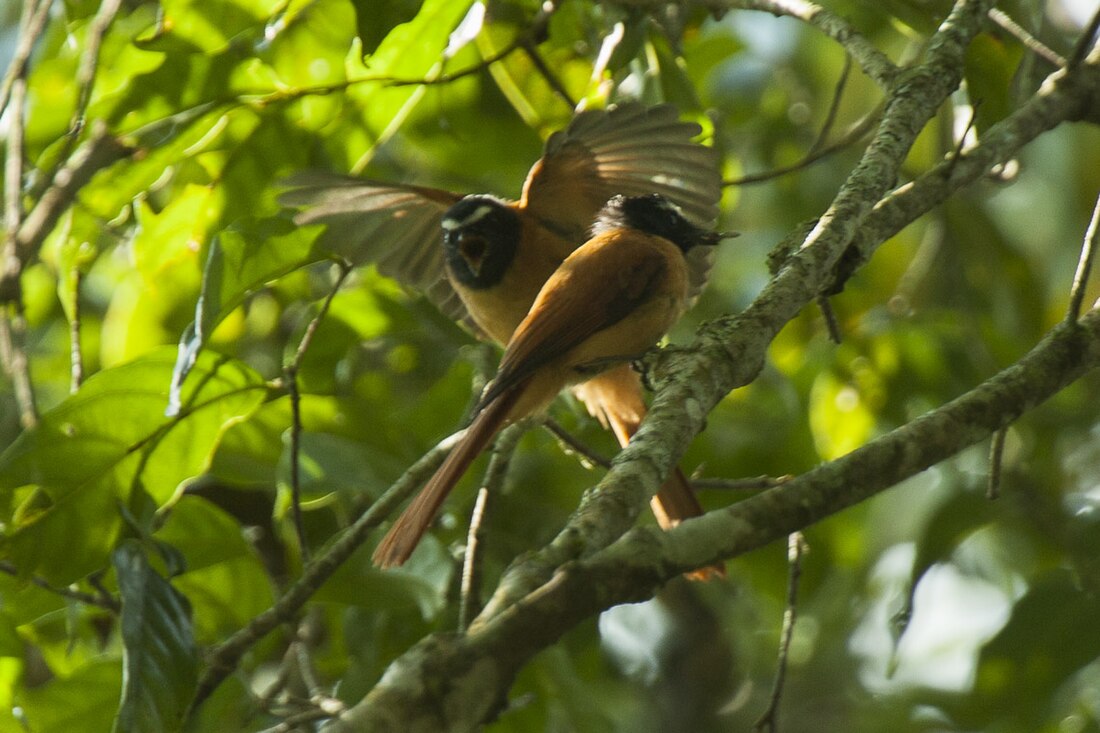Top Qs
Timeline
Chat
Perspective
Black-and-cinnamon fantail
Species of bird From Wikipedia, the free encyclopedia
Remove ads
The black-and-cinnamon fantail (Rhipidura nigrocinnamomea) is a species of bird in the fantail family Rhipiduridae. It is endemic to the island of Mindanao in the Philippines where it is found in the tropical montane forests above 1,000 meters above sea level. The specific name is derived from Latin niger for 'black', and cinnamomeus for 'cinnamon'.[2]
Remove ads
Description and taxonomy
EBird describes the bird as "A fairly small, long-tailed bird of montane forest on Mindanao. Rufous above with darker wings, a tail frequently held cocked and fanned, pale orange underparts, a black hood, and a broad white eyebrow. Bundok Flycatcher and Eyebrowed Thrush both have orange chest, a black head, and a white brow, but Black-and-cinnamon Fantail is larger than the flycatcher and smaller than the thrush, with a totally different shape and habits. Voice includes a sharp “gyuk!” or grating chatter."[3]
The black-and-cinnamon fantail is 16 cm (6.3 in) long and weighs 10.5–14.5 g (0.37–0.51 oz)
Subspecies
Two subspecies are recognized:
- R. n. nigrocinnamomea – Found on Central and Southern Mindanao
- R. n. hutchinsoni – Found on North, West and Eastern Mindanao; similar to the nominate but lacks the white on the breast[2]
Remove ads
Ecology and behavior
It forages in the understory for insects and often joins mixed-species flocks that include other montane Mindanao birds that include Cinnamon ibon, Little pied flycatcher, Turquoise flycatcher, Negros leaf warbler and other small birds.
Birds in breeding condition with enlarged gonads have been collected from January to May, which is in line with the general breeding season for most birds in the area.[4]
Remove ads
Habitat and conservation status
The species inhabits forest understorey and edge, second growth and grassy clearings at altitude over 1,000 m. The IUCN has classified the species as being of Least Concern but was formerly listed as near threatened. Despite its limited range, it is said to be locally common. As it occurs in rugged and inaccessible mountains, this has allowed a large portion of its habitat to remain intact. However, there it is still affected by habitat loss through deforestation, mining, land conversion and slash-and-burn - just not to the same extent as lowland forest.
It is found in multiple protected areas such as Mount Apo and Kitanglad Mountain Range but like all areas in the Philippines protection is lax.[5]
References
Wikiwand - on
Seamless Wikipedia browsing. On steroids.
Remove ads


